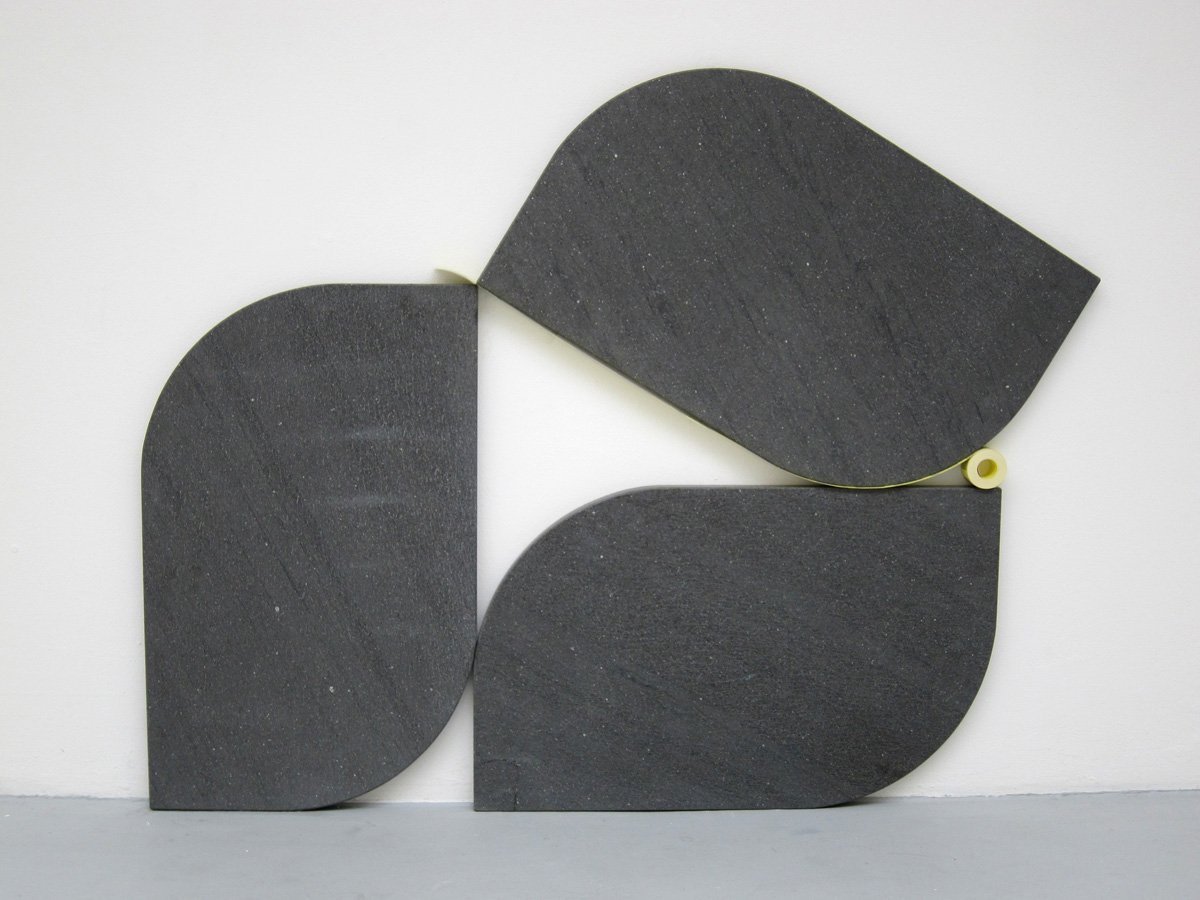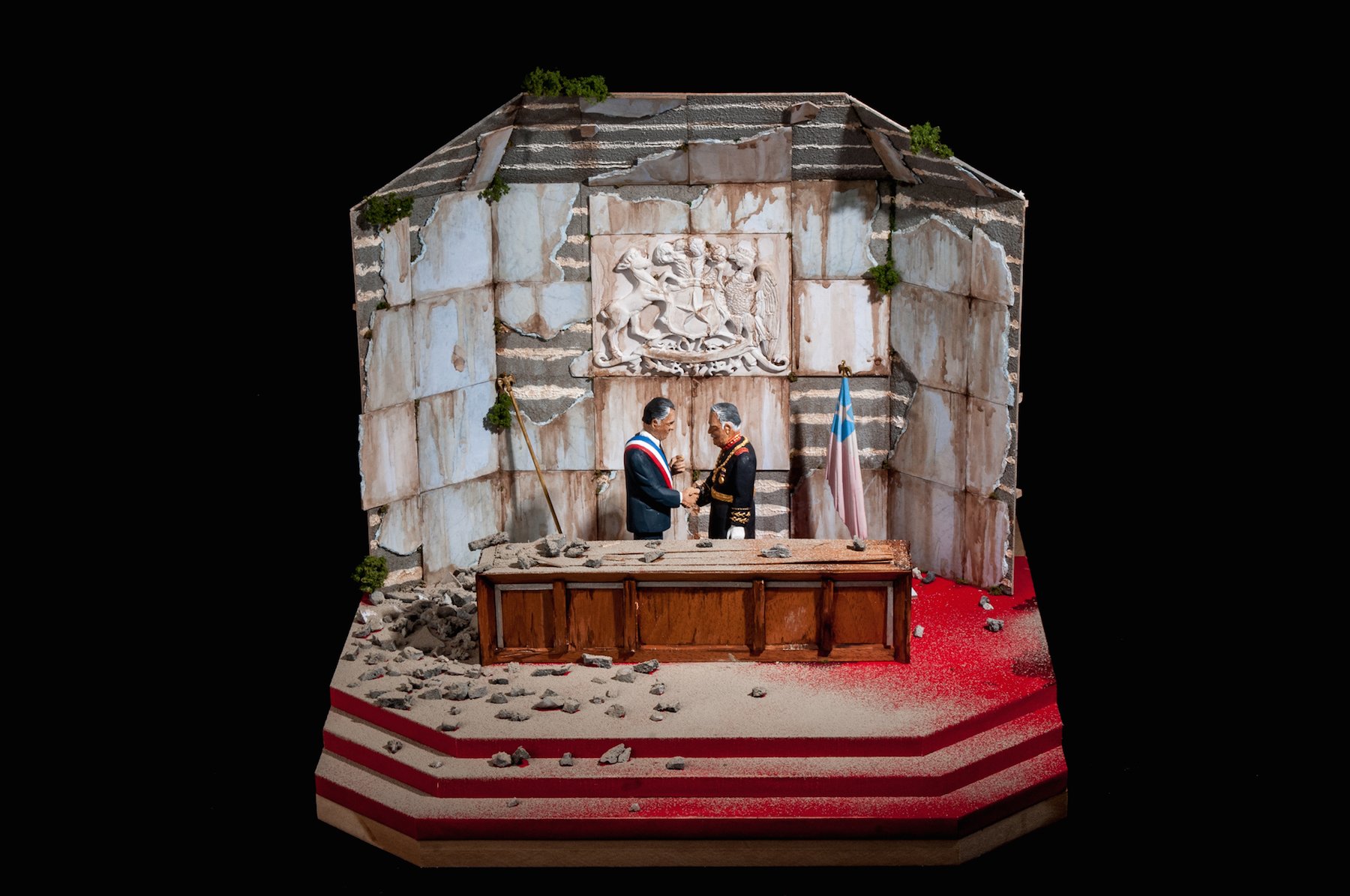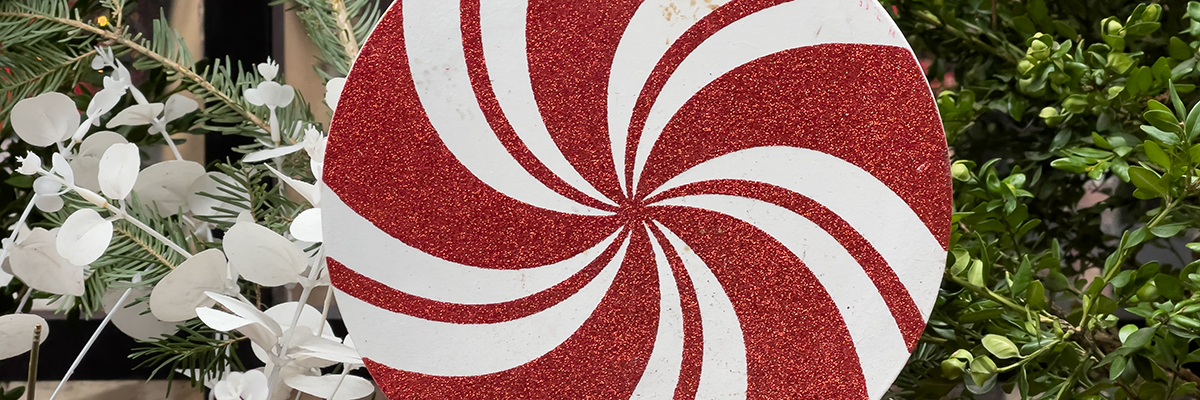Flower Tree
2008 - Sculpture (Sculpture)
Choi Jeong-Hwa
The application of bright colors and kitsch materials in Flower Tree manifests a playful comment on the influence of popular culture and urban lifestyle. And though his works share a similar sensibility to Claes Oldenburg’s oversized sculptures from everyday objects, Choi draws from his immediate surroundings and life experience. Public sculptures with a flower theme are often used to decorate the rapidly urbanized cities in Asia, which are constructed with concrete and steel materials. Ironically, these public sculptures are usually also superficial and made from the same unnatural materials. Thus, while seeming to be a celebration of nature’s beauty and the need for imagination when living in an environment with a diminishing natural aesthetic, Flower Tree embodies the paradox of modern life.
Using a broad range of media and materials including video, moulded plastic, inflatable fabrics, shopping trolleys, real and fake food, lights, wires, and kitsch Korean artifacts, Choi Jeong-Hwa’s practice blurs the boundaries between art, graphic design, industrial design, and architecture. Along with artists such as Bahc Yiso, Beom Kim, and Lee Bul, Choi was part of a generation whose unique and varied practices gave rise to Seoul’s burgeoning art scene in the 1990s. Trained in Korea during a period of rapid modernization and economic growth, Choi’s work acknowledges and internalizes the processes of consumption and the distribution of goods and has resulted in his being recognized as the leader of Korea’s pop art movement. Often infusing his works with a hint of humor, Choi creates monumental installation with everyday objects. His works also touch on issues of accessibility in art and contemporary culture, concepts of individual authorship and originality in art, and they comment on the privileged environment of art institutions and the prized status of artworks amidst a consumer-frenzied world.
Colors:
Related works featuring themes of: » Architecture in Art, » Art That Plays With Scale, » Assemblage, » Consumerism, » Contemporary Participation, » Korean
» see more

© » KADIST
Bjorn Copeland
2009Sign #1 , Sign #2 , Sign #3 were included in “Found Object Assembly”, Copeland’s 2009 solo show at Jack Hanley Gallery, San Francisco...

© » KADIST
Minouk Lim
2012The Possibility of the Half by Minouk Lim is a two-channel video projection that begins with a mirror image of a weeping woman kneeling on the ground...

© » KADIST
Gabriel Kuri
2010Gabriel Kuri has created a series of works in which he juxtaposes perennial and ephemeral materials...

© » KADIST
Wong Wai Yin
2021Drawn from the widely circulated images of protests around the world in support of women rights and racial equality, the phrase I can’t believe we are still protesting is both the title of Wong Wai Yin’s photographic series and a reference to similar messages seen on protest signages...
Other related works, blended automatically
» see more

© » KADIST
Bjorn Copeland
2009Sign #1 , Sign #2 , Sign #3 were included in “Found Object Assembly”, Copeland’s 2009 solo show at Jack Hanley Gallery, San Francisco...

© » KADIST
Minouk Lim
2012The Possibility of the Half by Minouk Lim is a two-channel video projection that begins with a mirror image of a weeping woman kneeling on the ground...

© » KADIST
Barbara Kasten
2008Barbara Kasten’s Studio Construct 51 depicts an abstract still life: a greyscale photograph of clear translucent panes assembled into geometric forms, the hard lines of their edges converging and bisecting at various points...

© » KADIST
Haegue Yang
2016A steel clothing rack adorned with turbine vents, Moroccan vintage jewelry, pinecones and knitting yarn, these heterogeneous elements are used here to create an exotic yet undefined identity within the work...
Related works sharing similar palette
» see more

© » WHITEHOT
Miami Art Week Fairs (Other Than Art Basel) You Should Know advertise donate post your art opening recent articles cities contact about article index podcast main December 2023 "The Best Art In The World" "The Best Art In The World" December 2023 Miami Art Week Fairs (Other Than Art Basel) You Should Know Ki Smith and Sono Kuwayama...

© » KADIST
Nicolás Grum
2014El gran pacto de Chile (The Great Pact) and La balserita de Puerto Gala (The Raft) were part of the “Museo Futuro”, an exhibition in which the artist presented nine miniature dioramas staging fragments of Chile’s history, from its colonial invasions to the present...
Related works found in the same semantic group
» see more

© » KADIST
Martin Boyce
2003In the installation Our Love is like the Flowers, the Rain, the Sea and the Hours, Martin Boyce uses common elements from public gardens – trees, benches, trashbins– in a game which describes at once a social space and an abstract dream space...

© » KADIST
Kapwani Kiwanga
2017Flowers for Africa is a protocol project started in 2014, which questions the material that history is made of: its fragility, its infallibility, its visibility and its hierarchy...

© » LENS CULTURE
Unlike flowers, she won’t come back with spring - Photographs by Francesco Pennacchio | Essay by Magali Duzant | LensCulture Feature Unlike flowers, she won’t come back with spring Through archival imagery and his own pictures, Francesco Pennacchio constructs a photographic bridge to the memory of his mother; a voyage that is equal parts tender and playful...



